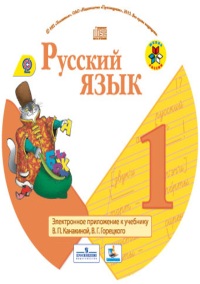J. Belknap – Equine Laminitis (2017)
4.760 ₽
Автор: J. Belknap
Название книги: Equine Laminitis
Формат: PDF
Жанр: Ветеринария
Страницы: 465
Качество: Изначально компьютерное, E-book
#1 New Release in Equine Veterinary Medicine
The first book dedicated to this common, serious, and complex equine disease, Equine Laminitis is the gold-standard reference to the latest information on every aspect of the disease and its treatment.
Provides the first book devoted specifically to equine laminitis
Discusses the current state of knowledge on all aspects of the disease, including its history, relevant anatomical considerations, pathophysiology, the diagnostic workup, and clinical treatment
Presents 50 chapters written by leading international experts, under the editorship of the foremost authority on equine laminitis
Offers a thorough understanding of this common affliction, grounded in the scientific literature
Describes effective prevention and treatment plans
Описание
Foreword
I was once asked to introduce Professor James Belknap and
present to him an award at a prestigious International Equine
Conference on Laminitis. The award was for scientific excellence
in the field of laminitis research, and the venue was a noisy gala
dinner inWest Palm Beach, USA. I thought it best not to elaborate
too grandly about his already numerous and excellent contributions
to the science of laminitis, so withoutmuch preamble
I happily presented the award with acclamation from the audience.
That was over 10 years ago and could have been the culmination
of his career if he had slipped into university administrative
roles as so many top academics do. However, fortunately
for us, his hunger to decipher laminitis prevailed and his scientific
production continued setting him apart from his peers
and placing him at the forefront of the laminitis scientific community.
He is the pre-eminent thinker and instigator of cuttingedge
laminitis research, so it is entirely appropriate that he contributes
to and edits this important first in the laminitis literature.
Jim has the historical background and vision to choose the
appropriate authors and rigorously oversee their contributions
to deliver an historic, first of its kind publication; a multiauthor
text with the scope to deliver new information on nearly every
aspect of Equine Laminitis. This ranges from the latest molecular
perturbations at the cellular level, state-of-the-art radiography,
to the effectiveness of various clinical shoeing techniques
applied to horse’s feet.
I try to keep abreast of the laminitis literature and didn’t
expect to learn much by reading the chapters of this book, but I
was agreeably shocked to discover how little I knew and much
that was new and interesting. It was like meeting old friends
and colleagues and talking ‘laminitis.’ In a book of this sort, the
rigours of peer review are relaxed a little and the authors are able
to not only present the expert details of their specialization, but
to speculate and ‘think outside the box.’ Thus, we learn of visions
for future research, why certain procedures failed or succeeded,
and exciting – yet to be published – data.
Reading this book will bring you up to date with the latest
information on the horse’s foot and its major affliction, laminitis.
It will help you better understand the disease and thus formulate
effective preventive and treatment strategies. It will even
help you deliver improved lecture and workshop material. I was
recently lecturing internationally and, stuck with the habit of
updating my lecture material at the last minute and with early
access to the chapters of the book, I was able to quickly add new,
pertinent material (referenced of course) to my PowerPoints.
Thus, the text is a timely and essential ‘must-have’ addition to
the bookshelf or computer/tablet of all who work with and are
fascinated by the horse’s foot.
Although long overdue, a book such as this, written after we
have struggled with laminitis into the modern era of molecular
biology and veterinary diagnostics, can at last capture important
progress that has arisen from peer-reviewed, validated basic and
clinical research (all of which is presented by the chief investigators
and their teams in the chapters that follow). An example is
the recognition that three different categories of laminitis exist:
sepsis-related; endocrinopathic; and supporting limb laminitis.
Knowing that treatment should be anti-inflammatory, insulinreducing
or circulation-promoting, respectively, has translated
into more effective clinical management. Another realization
is that, regardless of the laminitis category, the essential clinical
problem is displacement of the distal phalanx and its wideranging
anatomical consequences. Chapters devoted to digital
radiographic imaging that can be enhanced with contrast media
show how to assess the new laminitis case, monitor the effects
of therapeutic farriery on the position of the distal phalanx, and
follow the progression of laminitis into its chronic phase. It was
refreshing to read that nonsteroidal anti-inflammatory drugs
(NSAIDs), while having many useful properties for laminitis
therapy, likely have little or no efficacy in directly preventing
the condition (Dr J Divers, Medical treatment of the laminitic
patient – anti-inflammatory therapy; see Chapter 31). DrDivers’
personal insight that prognosis after sepsis-related laminitis can
be correlated to the positive or negative analgesic response to
initial phenylbutazone dosing is noteworthy, therapeutic prognostication.
Many teachers of laminitis and certain textbooks still hold
with some form of blood supply problem being central to the
pathophysiology of all types of laminitis. This long-held tenet
has endured long after publication of evidence to the contrary,
and I anticipate this textbook will accelerate revision towards
more evidence-based pathogenesis. Indeed, Professor Belknap
in his introduction to this book states “Lamellar ischemia, originally
thought to be the driving force behind all types of laminitis,
only appears to play a primary role in supporting limb laminitis.”
Perhaps the documented presence of vasoconstrictive agents
that has been the focus of extensive laminitis research plays
only a contributing, synergistic role, in combination with the
overwhelming inflammatory mechanisms as suggested by Dr
Simon Bailey in his chapter, ‘Vasoactive drug therapies for laminitis – pharmacological and clinical aspects.’ Recent
research indicates that drugs used to promote digital vasodilation
for decades, including acepromazine (likely the second
most commonly used drug in laminitis therapy after phenylbutazone)
are ineffective, and that lamellar blood flow is probably
more responsive to dynamic loading/unloading of the foot than
to any pharmacological intervention.
A novel focus of the book are chapters devoted to a single
cell; the lamellar basal epithelial cell (LBEC), the building block
of hoof lamellae. Ultimately, layers of LBECs are responsible
for the suspension of the distal phalanx by the hoof wall, and
these chapters suggest that dysregulation of the LBEC and its
intimate attachments to its neighbors and to the lamellar dermis
via its basement membrane is at the heart of the laminitis
lesion. It is now clear that the LBEC is not just a casualty of
the events occurring within the lamellae, but is likely to be an
active participant in the events leading to its structural failure
(Dr Leise’s chapter ‘Inflammation’). In other words, any current
hierarchical description of laminitis should start with the LBEC
and progress to failure of the suspensory apparatus of the distal
phalanx. This concept makes the term laminitis redundant,
since the only category of laminitis with a proven inflammatory
basis is the sepsis-related form. For clarity, laminitis descriptors
should be enrolled to ensure meaning (e.g., clinical laminitis,
hyperinsulinemic laminitis, histopathologic laminitis, etc.).
Balance is essential in a book such as this, and it is important
that readers should be presented with views counter to those
generally accepted. This applies particularly to the question of
raising the heels of horses with chronic laminitis. This common
practice, deemed beneficial to reduce the pull of the deep flexor
tendon, is challenged in the chapter ‘Digital Biomechanics Relevant
to Laminitis’ by Professors Merritt and Davies. By increasing
the angle of the hoof, more shear loading may be applied to
the lamellar junction and despite the force of the deep digital
flexor tendon being reduced, this may be more likely to cause
tearing of the lamellar junction and promote its failure. Thus,
the mechanical benefits of raising or lowering the heels are currently
in dispute, and the reader will benefit from reading the
complete chapter and that of Dr A. Parks ‘Anatomy and Function.’
Likewise, deep flexor tenotomy surgical technique is put
into perspective as a salvage procedure, rather than a treatment,
and an option only likely to increase the comfort of the animal
for a variable amount of time, and rarely to allow the animal
to return to a low level of athletic activity (Dr W. Waguespack,
‘DeepDigital Flexor Tenotomy’).On the other hand. other
well-respected authors in this text promote both heel elevation
and deep flexor tenotomy. giving the reader the opportunity
to question these techniques and formulate therapeutic
options for their own laminitis patients based on reasonable
hypotheses.
Finally, as the editor points out in his introduction, a thorough
understanding of the different parameters of the diseases
leading to lamellar injury and the biomechanics of the foot are
required to successfully treat the wide variety of clinical scenarios
grouped under laminitis. This text will serve Dr Belknap’s
vision and amply promote an understanding of laminitis and
enable clinicians (veterinarians, farriers, and trimmers) to work
together with newinformation at their disposal to approach each
individual laminitis case.
At the American Association of Equine Practitioners Annual
Convention (New Orleans) in 2003, I concluded my ‘Laminitis
– In-Depth’ presentation by stating: “The biological basis of
laminitis has become molecular and the discipline of molecular
biology has laminitis in its cross-hairs. These are exciting times
to be involved in equine research – we now have tools our forefathers
would not have thought possible. A coherent body of knowledge
will soon emerge that will demystify laminitis.” Professor
Belknap has taken up the molecular biology toolset, and a true
understanding of laminitis is indeed emerging fromthe mist. To
achieve this, he createdmulticenter, international research teams
(including Australia), and the outcomes of his work – and that of
his collaborators – are presented within the pages of this book.
Ten years ago at the International Equine Conference on
Laminitis, atWest Palm Beach, I awarded Professor Belknap the
award for scientific excellence in the field of laminitis research.
I’m certainly glad I did because, as this text proves, there is
no doubt that James Belknap has gone on to become the preeminent
laminitis researcher of our time. We are fortunate
indeed that he has dedicated time and effort away from his
research to put together an encyclopedia of laminitis information
to benefit us all in our efforts to comfort horses and ponies
with the bane of laminitis.





Отзывы
Отзывов пока нет.